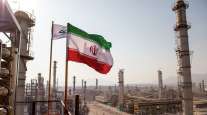Oil Begins 2019 With Renewed Slide Amid Fears Over China Growth

Oil started 2019 with another price slide as weaker Chinese manufacturing data pointed to slowing demand in the world’s second-biggest consumer of the fuel and to growing risks of a global crude surplus.
Futures declined 1.6% in New York after a turbulent 2018 that saw volatility soar in its final weeks as concerns over the U.S.-China trade dispute and an uncertain economic outlook roiled stock markets. Though both New York and London crude benchmarks rallied in the last days of 2018, they each lost 20% or more during the year on expectations that booming U.S. shale output could unleash a new glut.
“The omens are far from encouraging,” said Stephen Brennock, an analyst at PVM Oil Associates Ltd. in London. “Global oil inventories will build in the coming months. This is hardly a recipe for a sustained price recovery.”
The global benchmark crude declined 20% to $53.80 in 2018.
Although the Organization of Petroleum Exporting Countries and its allies have pledged substantial output curbs to prevent an oil surplus from forming this year, investors remain concerned that the cutbacks won’t be deep enough to make way for yet another supply surge from Texas and other states driving the U.S. shale revolution.

Angus Mordant/Bloomberg News
Warning lights in the global economy are only compounding expectations that there will be more oil supply than needed this year.
While President Donald Trump made positive noises about reaching a trade deal with his Chinese counterpart Xi Jinping over the weekend, the Chinese data — and similar readings from across Asia — are a stark example that the protectionist showdown is starting to have an impact on economic activity.
“Sluggish economic data we see from China is again worrying investors,” Ahn Yea Ha, a commodities analyst at Kiwoom Securities Co., said by phone from Seoul.
Trump tweeted Jan. 1 that gasoline prices are low and are expected to fall this year, likening the drop to a tax cut. He also signaled he wants to “make a deal” to break a stalemate that’s had part of the U.S. government shut for 11 days.




